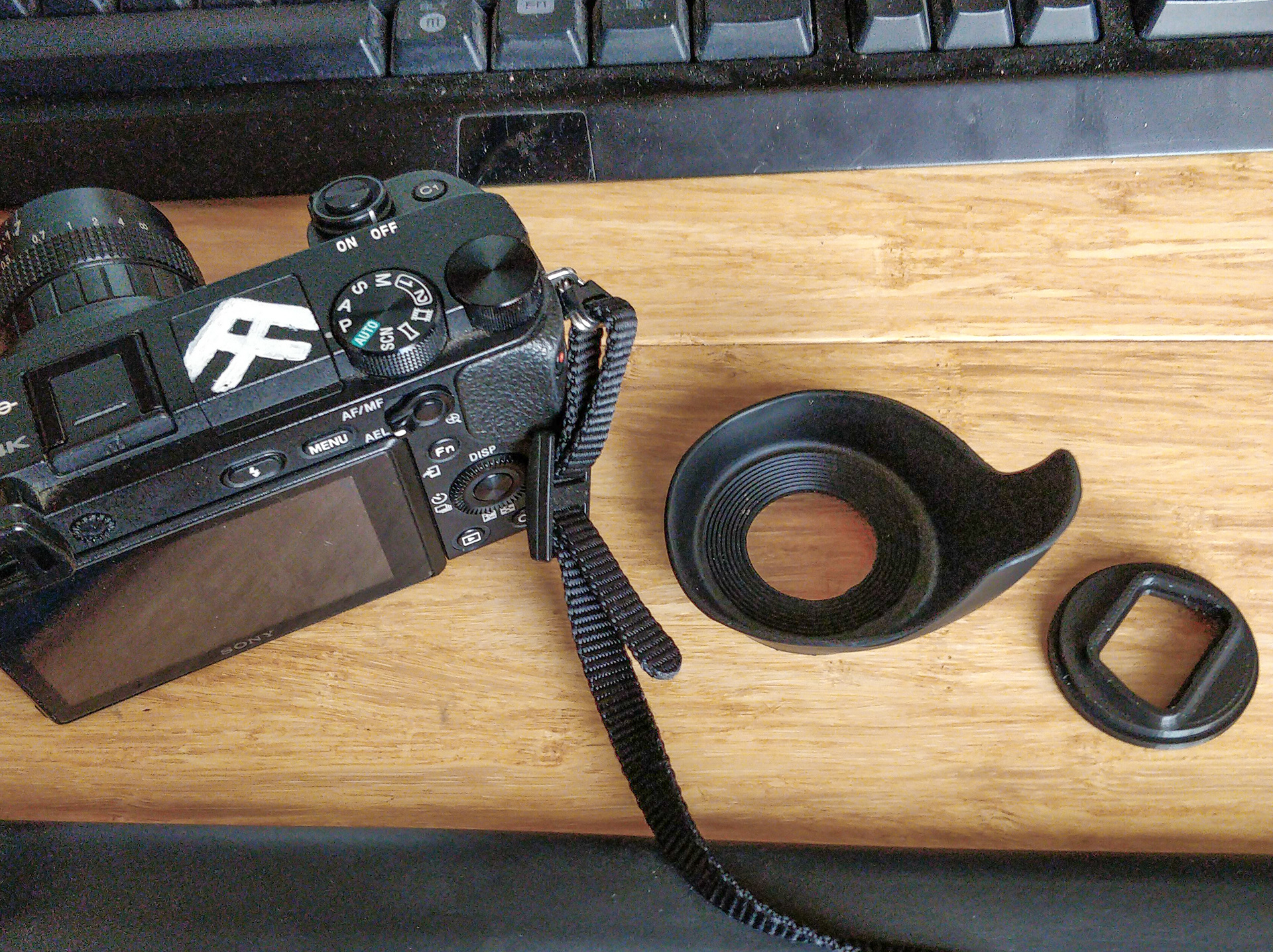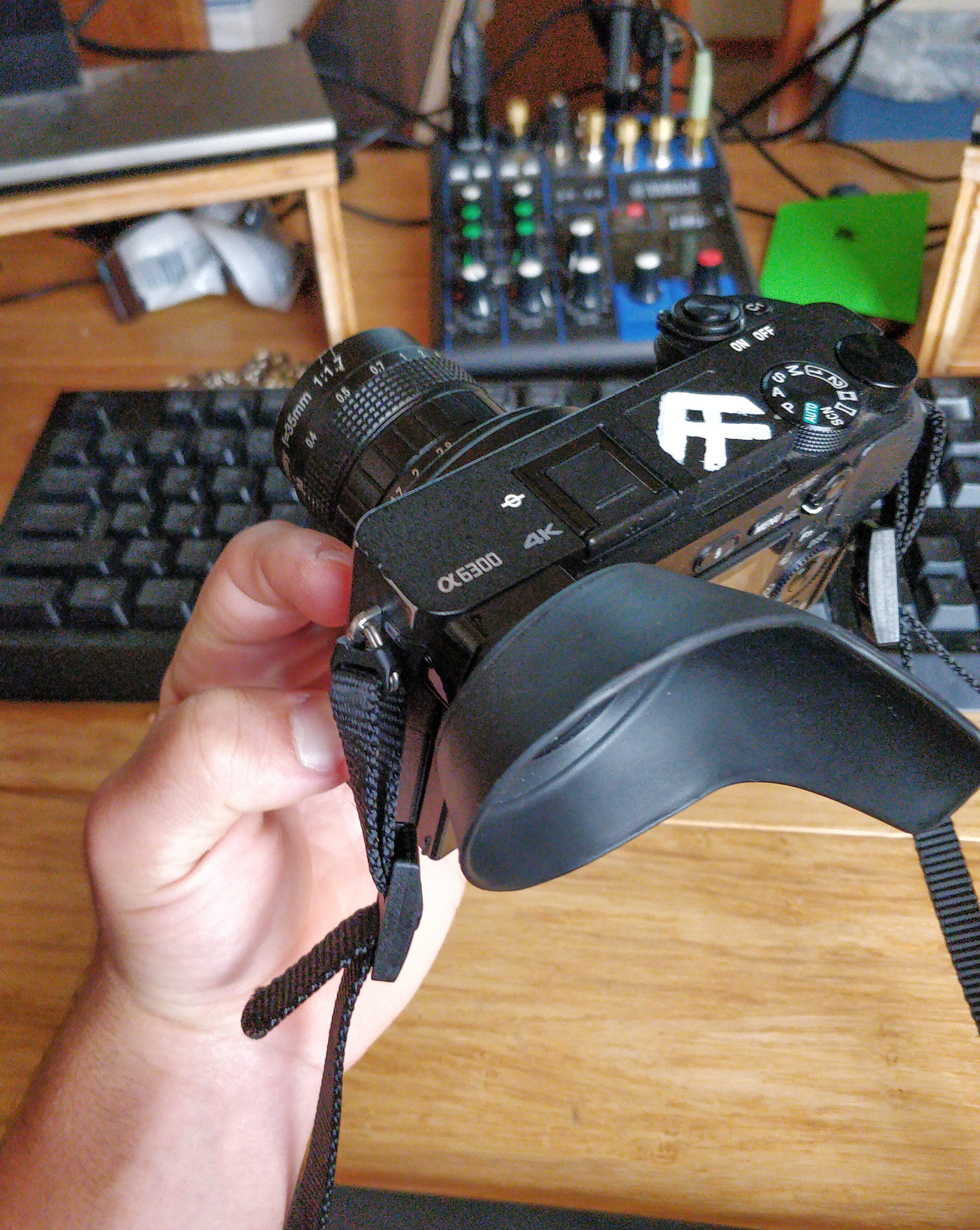
Pieces of the eyepiece laid out.

The 3D-Printed adapter in the flexible eyepiece.

The eyepiece attached to the camera.
With a mirrorless camera, I love know that exactly what I'm seeing through the viewfinder will be reproduced in the final image. Problem is, I don't think the manufacturer's hardware takes advantage of that feature enough. They included a small rubber rectangle that snapped onto the viewfinder's rim to block out a very minimal amount of light. Having taken apart some old camcorders for parts, I had a few of the rubber viewfinders that fit around the side of the photographers' eyes, blocking all extraneous light.
A few test prints later, I had a base that snapped onto the same points as the manufacturers included eyepiece. I then modeled it to fit with the rubber viewfinder and had a complete light-blocking solution! Because the eyepiece attached with a circle, I'm able to rotate the rubber piece for portrait or landscape shots.
